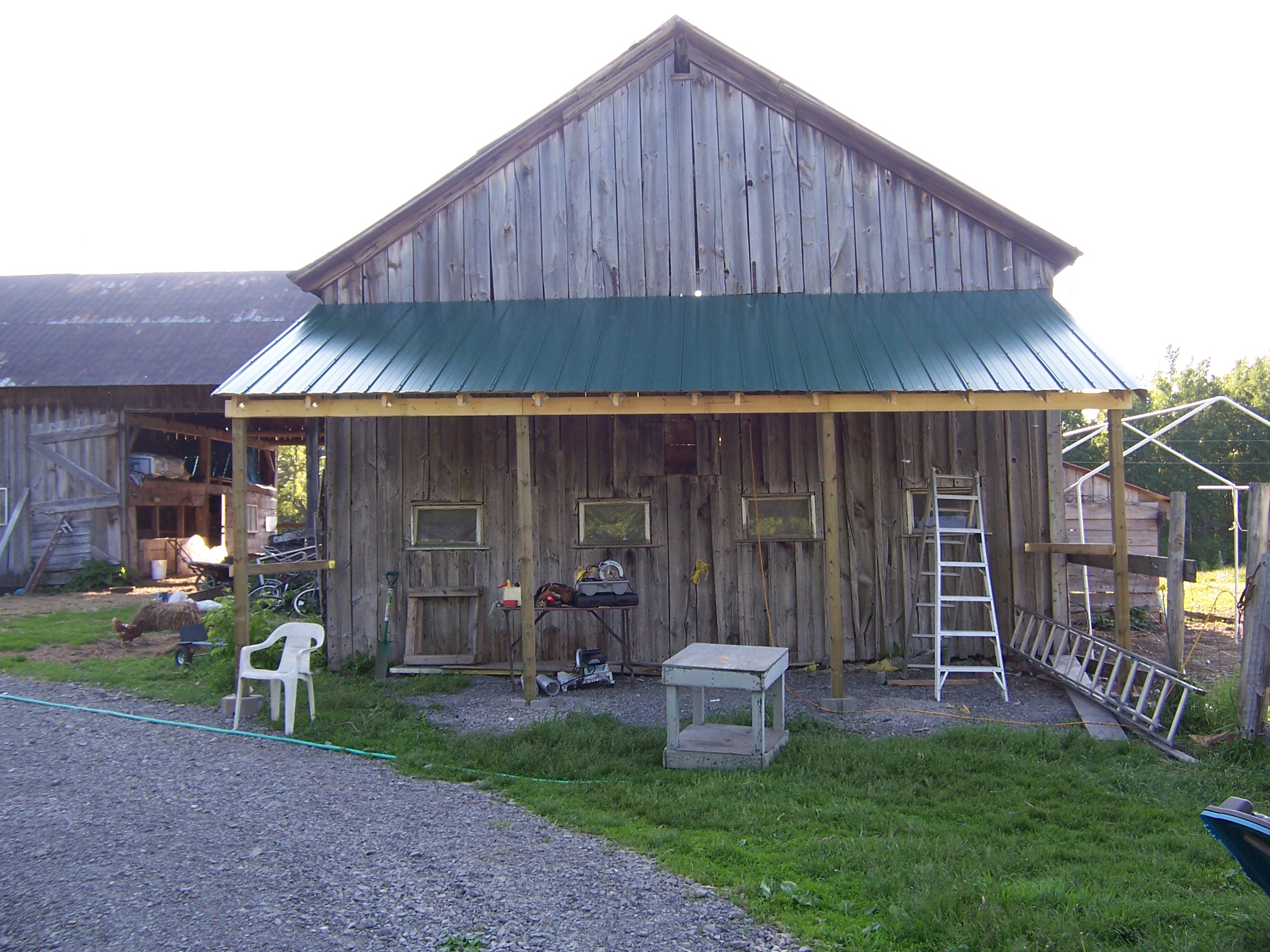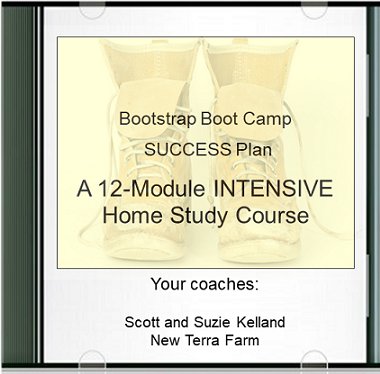Small Farm Living - getting stuff done on your small farm
Here's the reality of small farm living: there is always more to do on a small farm than there is time (and money) to do it.
That's just the nature of living and working on a small farm. So how do you choose which jobs and tasks to tackle, and how do you get the work done? Here's how we "plan our work and work our plan" at New Terra Farm.
Deciding on projects. Throughout the growing season we make note of ideas and projects we want to tackle next season.
These
might be 'fixes' for stuff that's not working well, e.g. we built a new
permanent processing area because the existing one was too small and
poorly laid out; or it might be a project to add to farm income e.g.
establishing honeybees to pollinate the garden and produce another cash
crop.
We know we can only tackle a certain number of projects; we try to limit ourselves to 2 or 3 BIG projects each year.
Projects like that are easy to plan; the time-line is usually
self-evident. We knew we needed the new processing area completed before
our first deliveries start in June. Honeybees can only be established
after the cold weather has passed in May (in our location). So this
gives us a deadline.
 Our new veggie processing area is located between our two main gardens
Our new veggie processing area is located between our two main gardensThen we do the research to create an implementation plan, get the materials and equipment needed, and schedule the work.
Note that we try to get big projects done before the garden swings into production, because from June to October that is our main occupation. That's another fact of small farm living, you always have to work around your main income-generating activity.
Small projects and chores are a part of farm living, too. There will always be a number of smaller projects to tackle as well. Scheduling all this work is the tricky part; there is usually something going on that needs your attention RIGHT NOW.
What works for us is to plan our tasks on a weekly basis. Once our plans for big projects are established, we plan each week to accomplish all the tasks necessary to finish the projects and keep the farm running.
One of the keys to success in weekly planning is to block out time for both project work and routine tasks. Here's what my schedule looks like right now at New Terra Farm, before the delivery season starts.
Sunday: planning day. We look at the week ahead, and plan our activities in the 'gaps' around time already committed. At this time of year on Sunday we try to take it a little easier than usual, too. Some downtime for rest and recovery is important to small farm living, too.
Monday: Every other Monday I write my farm newsletter for my CSA customers. Alternate Mondays I write a page or two for the farm website, (just like this one about farm living) or an article to be published in an on-line article directory. In the afternoon we can tackle a mini-project from our list.
Tuesday: in the morning I meet with my
Merrickville Goes Green group; in the afternoon we tackle a mini-project.
Wednesday: this is seed-starting day, and picture-taking day on the farm. Scheduling a definite time-slot for these activities makes sure they get done.
We start seeds every week throughout the season, from mid-February to September. We take pictures of stuff happening on the farm, the animals, the greenhouse, etc. This provides a record of activities, and material for my books.
Thursday: in the morning I'm usually writing my latest book; in the afternoon its mini-project time.
Friday: in the morning I write my e-newsletter to all my subscribers; more project time in the afternoon.
Saturday: this is usually 'errand' day; we get stuff we need for the farm and material for our projects.
I start my mornings at 4:30 or 5:00 am, because I've figured out this is my most creative and productive time. Whatever your personal 'peak period' is, try to schedule the activities that need serious attention during that time. (I have a friend who regularly produces great material between 11 pm and 2 am, after his kids are tucked away in bed.)
Each afternoon (during the 'off-season') I also try to get 30 minutes or so on the weights or exercise bike, sort of spring training for farmers. If I have wood to split and stack or garden beds to dig I claim that as my workout (hey, it's MY schedule and I can fudge it if I want to ;-)
And, lest we forget, Suzie has her own priorities and projects that need to be accommodated, too (happy wife, happy life!)
Of course most of this changes once the garden is in full swing; then the priority becomes the farmer's WWF - Weeding Watering and Feeding.
New for 2020: Get my FREE One-Acre Farm Plan and learn how to pigs, chickens and more, integrated with an organic market garden, to make more money from your small property.
Imagine building a profitable and sustainable mini-farm even on a small piece of land.
Enter your email address and your free report will be sent to you right away.
 Build a real plan for SUCCESS on your small farm
Build a real plan for SUCCESS on your small farmSpeaking of planning, being a good grower is only part of the answer to success. You also have to:
- Know how to plan and manage your business;
- Persuade others of the value of your products;
- Maintain financial stability; and,
- Stay motivated through your journey to small farm success.
The Bootstrap Boot Camp Success Plan course will teach you all this and more. Now just $97 $37 only from New Terra Farm.
- Home Page ›
- 5 Acre Farm ›
- Farm Living
Recent Articles
-
Farm grown reviews of products recommended by New Terra Farm
Dec 04, 25 06:26 AM
Find great farm and garden products in my farm grown reviews -
Best Chicken Coop and Accessories for Small Farms and Homesteads
Nov 30, 25 09:18 AM
Looking for the best chicken coop? Here are the top coops, accessories, nest boxes, and gear to build a safe, productive poultry setup. -
Community Supported Agriculture Marketing Ideas To Sell Out The Season
Nov 05, 25 05:18 AM
Authentic Community Supported Agriculture marketing ideas to grow loyalty, boost sign-ups, and sell out your CSA every year









